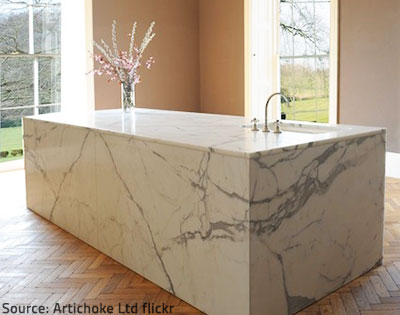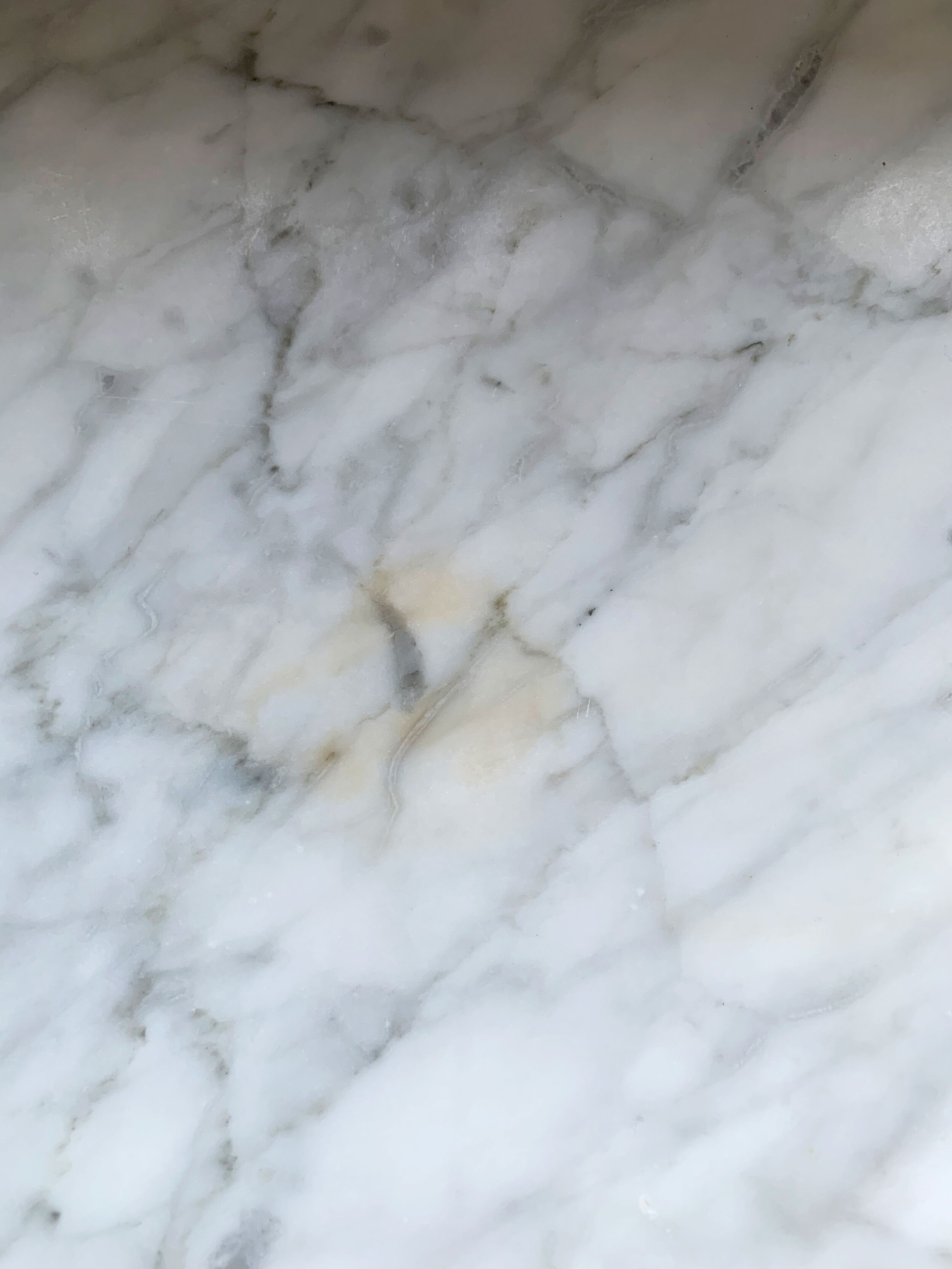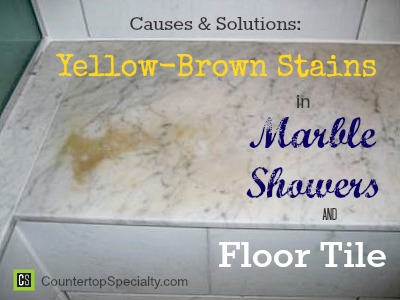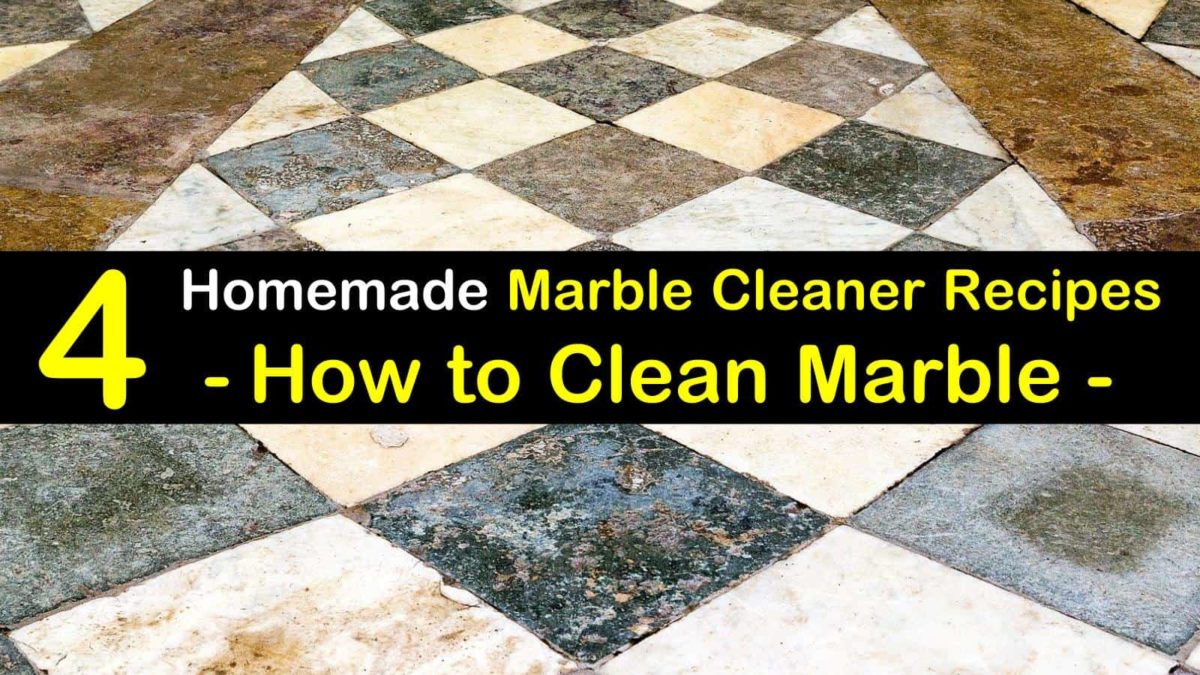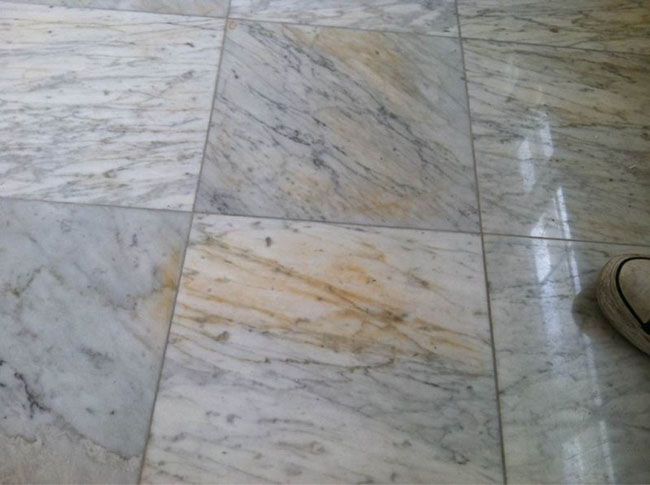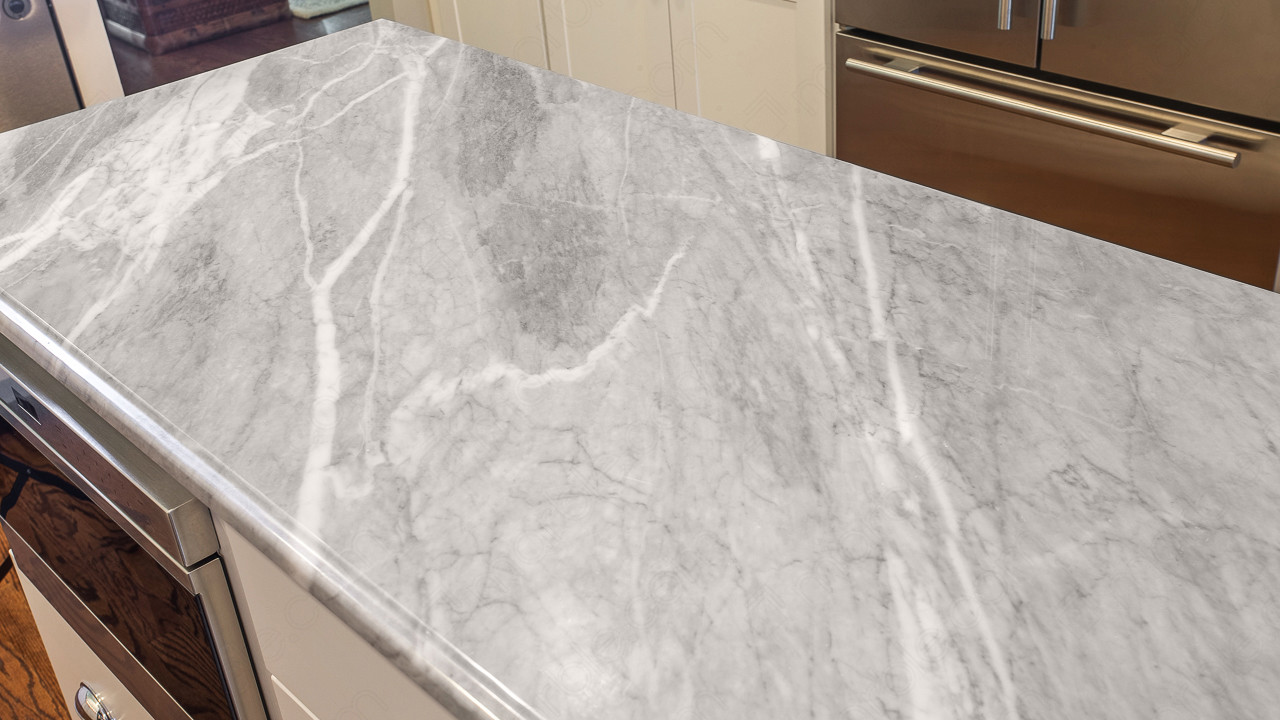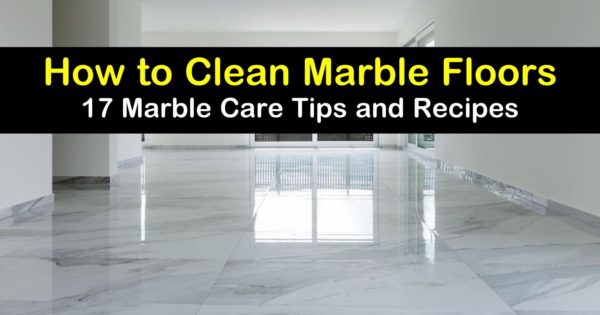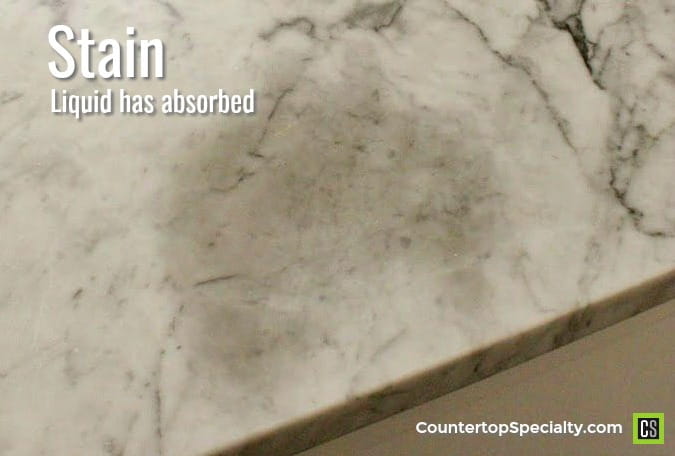Understanding the Nature of Oil Stains on Marble Floors
Marble floors are known for their elegance and beauty, but they can be vulnerable to oil stains. Understanding the nature of oil stains on marble floors is crucial in effectively removing and preventing them. Let’s discuss the causes of oil stains on marble floors and explore how they can impact the appearance and longevity of the flooring.
- Characteristics of Oil Stains: Oil stains on marble floors are typically characterized by their dark, patchy appearance. These stains can penetrate the porous surface of the marble, making them more challenging to remove compared to other types of stains. It is important to note that oil stains can vary in intensity, depending on the type of oil and the duration of exposure.
- Common Causes of Oil Stains: Oil stains on marble floors can occur due to various reasons. Some common causes include accidental spills of cooking oil, cosmetics, or beauty products. Additionally, the presence of oil-based cleaning agents or improper maintenance techniques can contribute to the development of oil stains. Identifying the root cause of the oil stain is essential in implementing effective removal and prevention strategies.
- Impact on Marble Flooring: Oil stains can significantly impact the appearance of marble floors. They can create unsightly blemishes and discoloration, detracting from the natural beauty of the marble. Moreover, if left untreated, oil stains can gradually seep deeper into the marble, potentially causing long-term damage. Understanding the potential consequences of oil stains emphasizes the importance of prompt and proper stain removal techniques.
- Factors Affecting Oil Stain Absorption: The absorption of oil stains on marble floors can be influenced by several factors. The porosity of the marble, the type of oil, and the duration of exposure all play a role in determining the level of absorption. It is crucial to consider these factors when formulating a stain removal plan, as they can affect the effectiveness of different cleaning methods.
- Importance of Timely Stain Removal: Quickly addressing oil stains on marble floors is crucial to minimize their impact. The longer the stain remains untreated, the more challenging it becomes to remove. Additionally, prolonged exposure to oil stains can lead to permanent damage or discoloration of the marble. Understanding the urgency of stain removal underscores the need for proactive maintenance and care of marble floors.

Preparing the Necessary Tools and Materials for Oil Stain Removal
Successfully removing oil stains from marble floors requires the right tools and materials. Adequate preparation ensures that the stain-removal process is efficient and effective. In this article, we will explore the essential tools and materials needed to tackle oil stains on marble floors.
Protective Gear: Before embarking on the stain removal process, it is crucial to prioritize personal safety. Wearing protective gear such as gloves, goggles, and a face mask is essential to avoid any potential harm from chemicals or cleaning agents. Protecting yourself should be the first step in preparing for oil stain removal.
Absorbent Materials: Absorbent materials play a vital role in lifting oil stains from marble floors. Paper towels, white cloths, or lint-free rags are excellent choices for absorbing excess oil and cleaning solutions. Make sure to have an ample supply of these materials on hand to facilitate the stain-removal process.
Gentle Cleaning Agents: When dealing with oil stains on marble floors, it is crucial to avoid harsh or abrasive cleaning agents that can damage the surface. Opt for gentle, pH-neutral cleaning solutions specifically designed for marble surfaces. These products effectively break down oil stains without compromising the integrity of the marble.
Stain Removers: For stubborn oil stains, specialized stain removers can be highly effective. Look for oil stain removal products specifically formulated for marble surfaces. These stain removers often contain active ingredients that penetrate the stain and facilitate its removal. Remember to read and follow the instructions carefully to ensure safe and effective use.
Soft-bristled Brush or Sponge: A soft-bristled brush or sponge is a valuable tool for agitating and loosening oil stains. Choose a brush with soft bristles to avoid scratching the marble surface. Gently scrubbing the stain with a soft-bristled brush or sponge helps to dislodge the oil particles, making them easier to remove.
Clean Water: Clean water is essential for rinsing the marble surface after stain removal. It is crucial to remove any residue from cleaning solutions or stain removers to prevent potential damage to the marble. Ensure access to a reliable source of clean water during the stain removal process.
Step-by-Step Guide to Removing Oil Stains from Marble Floors
Removing oil stains from marble floors requires a systematic approach to ensure effective stain removal without causing any damage to the surface. We will provide a step-by-step guide to help you successfully remove oil stains from your marble floors.
Blotting the Stain: Start by blotting the oil stain with absorbent materials such as paper towels or a white cloth. Gently press the material onto the stain to absorb as much oil as possible. Avoid rubbing the stain, as this can spread the oil and make it more difficult to remove.
Preparing the Cleaning Solution: Mix a small amount of pH-neutral cleaning solution with warm water in a bucket or container. Follow the instructions on the cleaning solution for the appropriate dilution ratio. Avoid using excessive amounts of cleaning solution, as this can leave residue on the marble surface.
Applying the Cleaning Solution: Dampen a clean white cloth or sponge with the prepared cleaning solution. Gently dab the cloth or sponge onto the oil stain, ensuring that the stain is thoroughly saturated with the cleaning solution. Allow the solution to sit on the stain for a few minutes to break down the oil.
Agitating the Stain: Using a soft-bristled brush or sponge, gently scrub the stain in a circular motion. This helps to further loosen the oil particles from the marble surface. Be careful not to apply excessive pressure or use abrasive materials that can scratch the marble.
Rinsing the Surface: After agitating the stain, rinse the marble surface thoroughly with clean water. This step is crucial to remove any residue from the cleaning solution and ensure the marble is clean and undamaged. Use a clean cloth or sponge soaked in clean water to rinse the area.
Drying the Surface: After rinsing, use a dry, lint-free cloth to gently pat the marble surface dry. Avoid leaving any moisture on the surface, as this can lead to water spots or streaks. Allow the marble floor to air dry completely before walking on it or placing any objects back on the surface.
Tips and Tricks for Preventing Future Oil Stains on Marble Floors
Prevention is key when it comes to maintaining the pristine appearance of marble floors and avoiding the hassle of oil stain removal. We will share some valuable tips and tricks to help you prevent future oil stains on your marble floors.
Regularly Seal Your Marble: One of the most effective ways to prevent oil stains on marble floors is by regularly sealing the surface. Marble is a porous material, and sealing it creates a protective barrier that minimizes the absorption of oil and other liquids. Consult with a professional or refer to the manufacturer’s guidelines to determine the appropriate sealant and frequency of application.
Clean Up Spills Immediately: Promptly clean up any spills that occur on your marble floors, especially those involving oil-based substances. Use a soft cloth or paper towel to blot the spill, absorbing as much liquid as possible. Avoid wiping or rubbing the spill, as this can spread the oil and increase the chances of staining.
Use Mats and Rugs: Place mats or rugs in areas that are prone to spills or heavy foot traffic. These protective coverings serve as a barrier between the marble floor and potential oil sources. Additionally, they help trap dirt and debris, reducing the risk of stains caused by abrasive particles.
Avoid Harsh Cleaning Agents: When cleaning your marble floors, avoid using harsh or abrasive cleaning agents. These can strip away the protective sealant and make the marble more susceptible to oil stains. Instead, opt for pH-neutral, marble-specific cleaning solutions that are gentle yet effective at removing dirt and grime.
Regular Maintenance: Maintaining a regular cleaning and maintenance routine is crucial in preventing oil stains. Regularly sweep or vacuum your marble floors to remove dirt and debris that can attract and hold onto oil. Additionally, periodically mop the floors using a damp mop and a mild cleaning solution to keep them looking their best.
Use Coasters and Trivets: Place coasters under glasses and trivets under hot dishes or pots to prevent direct contact between the marble and oil-based substances. These simple accessories provide an extra layer of protection and minimize the chances of oil stains caused by heat or condensation.
Professional Options for Stubborn Oil Stains on Marble Floors
While many oil stains on marble floors can be effectively removed using DIY methods, some stubborn stains may require professional intervention. We will explore the professional options available for tackling stubborn oil stains on marble floors.
Professional Cleaning Services: Hiring a professional cleaning service that specializes in marble floor maintenance is an excellent option for removing stubborn oil stains. These professionals have the expertise, equipment, and specialized cleaning solutions to tackle even the most challenging stains. They can assess the condition of your marble floor, determine the appropriate cleaning method, and ensure that the stain is effectively removed without causing any damage.
Steam Cleaning: Steam cleaning is a popular method used by professionals to remove oil stains on marble floors. High-temperature steam is applied to the stained area, which helps to break down the oil particles and lift them from the marble surface. Steam cleaning is an effective and environmentally friendly option that can penetrate deep into the pores of the marble, resulting in thorough stain removal.
Poultice Application: A poultice is a mixture of a cleaning agent and an absorbent material that is applied to the stained area and left to dry. This method is particularly effective for deep-set or stubborn oil stains. The poultice works by drawing the oil out of the marble, allowing it to be easily lifted away. Professional marble restoration companies often have their own proprietary poultice formulas that are specifically designed for oil stain removal.
Diamond Polishing: For severe oil stains that have penetrated the marble floor, diamond polishing may be necessary. This process involves using specialized diamond abrasive pads to gently grind away the stained surface layer of the marble. Diamond polishing not only removes the stain but also restores the shine and smoothness of the marble floor. It is essential to hire professionals experienced in diamond polishing to ensure optimal results and avoid any damage to the marble.
Honing and Sealing: In some cases, stubborn oil stains may require honing and resealing of the marble floor. Honing involves using abrasive materials to remove a thin layer of the marble, effectively eliminating the stained surface. Once honing is complete, the floor is sealed to provide protection against future oil stains. Honing and sealing should only be performed by professionals, as it requires specialized equipment and expertise to achieve the desired results.
Crash Course: How To Clean, Polish and Maintain Marble Floors
How to Get Stains Out of Marble: Best Tips in 2022 Marble.com
17 Clever Ways to Clean Marble Floors
You Have Mastered a Marble Poultice if You can Spread Peanut Butter
How to Remove Stains from Marble Surfaces
Remove Water Stains on Carrara Marble
How to Clean Marble (Yes, Thereu0027s Hope for Those Stains
How to Remove Marble Stains Luce Blog
Related Posts:
- How To Make Your Marble Floor Shine
- Italian Marble Flooring Texture
- Marble Floor Cleaning Bristol
- Marble Flooring Cost Per Square Foot In India
- Botticino Marble Flooring
- Marble Floor Restoration Near Me
- Buy Marble Flooring Online India
- Marble Floor Wax Polish
- Marble Floor Cleaner Homemade
- Tiling Over Marble Floor
